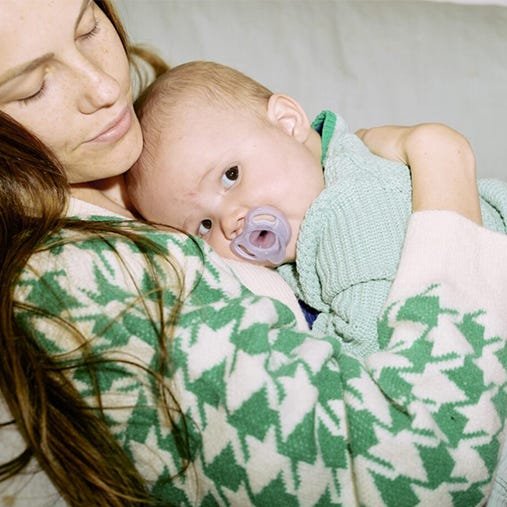Tummy muscle exercises
It's common for the two muscles that run down the middle of your stomach to separate during pregnancy. This is called diastasis recti or divarication.
These muscles should return to normal about 8 weeks after your baby is born. You can check the size of the separation using this simple technique:
- Lie on your back with your legs bent and your feet flat on the floor.
- Raise your shoulders off the floor slightly and look down at your tummy.
- Using the tips of your fingers, feel between the edges of the muscles, above and below your belly button. See how many fingers you can fit into the gap between your muscles.
Do this regularly to check that the gap is gradually getting smaller. If it's still obvious 8 weeks after birth, let your doctor know and they can refer you to a physiotherapist who'll give you some specific exercises.
Back pain support
Being pregnant, going through labour, and looking after a little one can put immense pressure on your back. Here are some tips to help you tackle back pain...
- Sit with your back well supported and straight when feeding your little one. Try putting a small pillow or cushion behind your waist to support your lower back and make sure your feet can reach the floor.
- Don't bend your back when you're changing nappies, picking up toys or bathing your baby. Kneel or squat while keeping your back straight instead - this will strengthen your thigh muscles too!
- Keep an eye on your posture when you're walking and pushing your little one's pram. Try and keep your arms bent at right angles and your back straight.
Get swimming
Swimming is a great, low-impact exercise that's also super relaxing. After birth, don't head the pool until you have had seven days without any bleeding or discharge, and if you've had a C-section, you should wait until your six-week check before taking a dip.
Postpartum exercise classes
Joining a class - whether physical or virtual - is a great way to get back into your exercising groove and feel like a part of a community.
BUMP "offers mothers and expectant mothers a truly one-of-a-kind experience, all under one roof." Their classes are designed to offer you a wide array of choices while on your postpartum fitness journey.
Online classes
These are super convenient and can be done from the comfort of home. We've researched a few for you, but there are so many more out there!
- CARiFiT creates fun, safe and effective babywearing workouts that're designed by ante and postpartum fitness experts and supported by a team of doctors, midwives, physiotherapists.
- MAMAWELL's on demand workouts promote strength and energy, and their postpartum programme builds up in intensity through the workout series.
You could also get in touch with your local yoga or pilates studio to find out what postpartum classes they offer. If you go to an exercise class that isn't designed specifically for new parents, make sure that your instructor knows that you've recently had a baby, that way they can tailor the exercises to you.
To sum up, be sure to take exercising after birth at your own pace, don't compare yourself to other parents, ask for advice from your doctor before starting something new, and enjoy those well-deserved endorphins!









